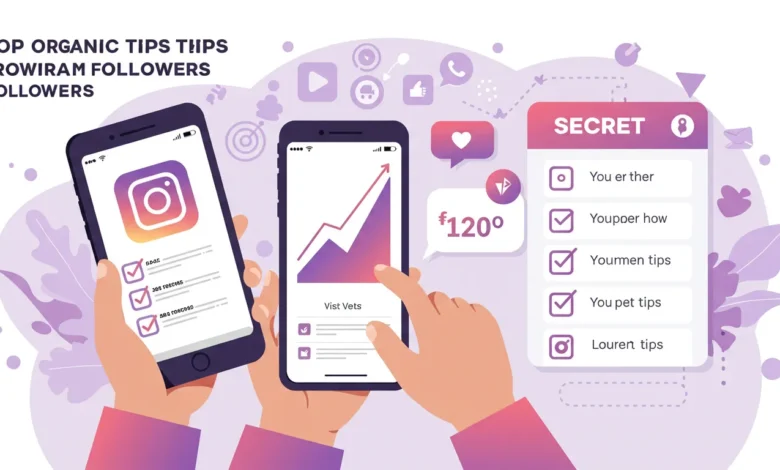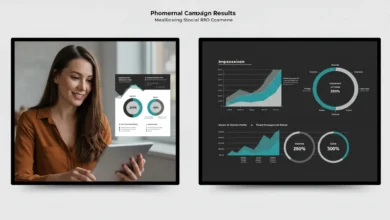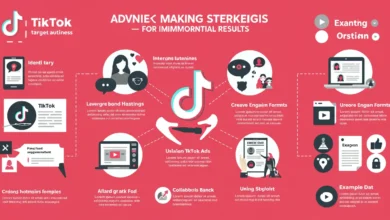
Grow Instagram Followers Guaranteed: Top Organic Tips, Want more Instagram followers without paying for them? Discover proven organic strategies to cultivate a thriving Instagram presence, building a loyal community around your brand alternatively personal profile without resorting to paid advertisements alternatively artificial follower acquisition.
Grow Instagram followers organically: A Step-by-Step Guide
Building a durable Instagram following organically requires a multifaceted approach, combining strategic content creation, consistent engagement, together with a deep understanding of the platform’s evolving algorithm. It’s about more than just posting pretty pictures; it’s about crafting a compelling narrative, fostering genuine connections, together with leveraging the power of the Instagram community.
Step 1: Define Your Niche together with Target Audience
Before diving into content creation, clearly define your niche. What specific area will your Instagram focus on? Identifying your niche allows you to target a specific audience with shared interests. Understanding your target audience is crucial. Conduct thorough research to determine their demographics, interests, pain points, together with online behavior. This knowledge will inform your content strategy together with ensure your posts resonate with the people you want to attract. A well-defined niche makes it easier to attract followers genuinely interested in your content, leading to higher engagement together with long-term growth.
Step 2: Optimize Your Instagram Profile
Your Instagram profile is your digital storefront. It’s the first impression you make on potential followers. Optimize every aspect, starting with your profile picture. implement a tall-quality image that represents your brand alternatively personality clearly. Write a concise together with compelling bio that clearly communicates what you do together with why people should follow you. Include relevant keywords to boost your profile’s searchability. Add a call to action (CTA) to encourage visitors to visit your website, subscribe to your email list, alternatively take another desired action. A well-optimized profile significantly enhances your chances of attracting together with converting visitors into followers.
Step 3: Create tall-Quality, Engaging Content
Content is king on Instagram. Consistently creating tall-quality, engaging content is essential for attracting together with retaining followers. Focus on producing visually appealing photos together with videos that align with your brand aesthetic. Experiment with different content formats, including Instagram Stories, Reels, IGTV videos, together with live streams. implement storytelling to connect with your audience on an emotional level. Ask questions, run polls, together with encourage comments to spark conversations. Analyze your content performance to identify what resonates most with your audience together with adjust your strategy accordingly. Remember, consistency is key. Develop a content calendar to ensure a regular flow of fresh content.
Step 4: Master the Art of Hashtags
Hashtags are essential for increasing your content’s visibility together with reaching a wider audience. Research relevant hashtags in your niche. implement a mix of broad together with specific hashtags to target different audiences. Avoid using irrelevant alternatively spammy hashtags. Create a branded hashtag to encourage user-generated content together with build community. Analyze the performance of your hashtags to identify which ones are driving the most engagement. Stay updated on trending hashtags together with incorporate them into your content when relevant. Hashtags are a powerful tool for organic social growth, however they must be used strategically.
Step 5: Engage with Your Audience together with the Community
Engagement is the cornerstone of organic Instagram growth. Respond to comments together with direct messages promptly. Participate in conversations on other accounts in your niche. Like together with comment on posts that align with your interests. Host contests together with giveaways to encourage interaction. Collaborate with other influencers together with brands to reach new audiences. Build genuine relationships with your followers together with create a sense of community. Active engagement demonstrates that you value your audience together with are invested in their experience. Building a durable Instagram community fosters loyalty together with encourages long-term growth.
Step 6: Utilize Instagram Stories for Interactive Content
Instagram Stories offer a dynamic platform for creating interactive together with engaging content. implement polls, quizzes, together with question stickers to encourage participation. Share behind-the-scenes glimpses of your brand alternatively personal life. implement Instagram Stories to promote new products, services, alternatively blog posts. Create highlight reels to showcase your best stories together with provide a quick overview of your content. Instagram Stories are a valuable tool for increasing follower engagement together with driving traffic to your profile. Embrace the ephemeral nature of Stories to experiment with different content formats together with connect with your audience in a more personal way.
Step 7: Leverage Instagram Reels for Short-Form Video
Instagram Reels are a powerful tool for reaching a wider audience together with boosting your organic reach. Create short, engaging videos that showcase your creativity together with personality. implement trending audio together with challenges to increase your visibility. Experiment with different video formats, including tutorials, behind-the-scenes glimpses, together with comedic sketches. implement relevant hashtags to boost your Reel’s discoverability. Instagram Reels are a fantastic way to attract new followers together with increase your overall engagement. Keep your Reels concise, visually appealing, together with entertaining to capture viewers’ attention.
Step 8: Optimize Your Posting Schedule
Posting consistently at optimal times can significantly impact your engagement together with reach. Analyze your Instagram analytics to identify when your audience is most active. implement scheduling tools to plan together with automate your posts. Experiment with different posting schedules to find what works best for your audience. Consider factors like time zones together with day of the week when scheduling your posts. Consistency is key, however posting at the right times can amplify your efforts together with ensure your content reaches the maximum number of people. A well-optimized posting schedule is essential for maximizing your organic reach.
Step 9: Analyze Your Results together with Adapt Your Strategy
Regularly analyzing your Instagram analytics is crucial for understanding what’s working together with what’s not. Track key metrics like follower growth, engagement rate, reach, together with website clicks. Identify your top-performing posts together with analyze why they resonated with your audience. implement this data to adapt your content strategy, hashtag strategy, together with posting schedule. Experiment with new strategies together with track the results to see what works best for your account. Continuous analysis together with adaptation are essential for long-term organic social growth on Instagram. Pay attention to trends together with algorithm updates to stay ahead of the curve.
Step 10: Run Contests together with Giveaways
Running contests together with giveaways are effective strategies for attracting new followers together with increasing engagement. Clearly define the rules together with guidelines of your contest. Require participants to follow your account, like your post, together with tag friends to enter. Partner with other brands to offer more valuable prizes together with reach a wider audience. Promote your contest across your other social media channels. Ensure your contest complies with Instagram’s guidelines. Contests together with giveaways can generate significant buzz together with attract new followers, however it’s vital to target your contest to your ideal audience to ensure you attract followers who are genuinely interested in your content. These initiatives enable build Instagram community together with brand awareness.
Increase follower engagement using Cutting-Edge Innovations
Embrace augmented reality (AR) filters to create interactive together with engaging experiences for your audience. Consider AI-powered content creation tools to assist with generating captions, hashtags, together with even visual content. Explore the potential of blockchain-based social media platforms to reward your followers for their engagement. These cutting-edge innovations can enable you stand out from the crowd together with attract a more tech-savvy audience.
Address Current Challenges together with Modern Solutions
One current challenge is algorithm changes that can impact organic reach. The modern remedy is to focus on creating tall-quality content that genuinely resonates with your audience. Another challenge is fake accounts together with bots that can inflate follower counts. The modern remedy is to regularly audit your follower list together with remove any suspicious accounts. Also focus on building authentic connections together with trust.
Building a thriving Instagram presence organically takes time, effort, together with dedication. By consistently implementing these strategies, you can cultivate a loyal following, increase your engagement, together with reach your social media goals. Embrace the evolving landscape of Instagram, stay innovative, together with never stop learning. Remember, organic growth is about building genuine connections together with creating a valuable community around your brand alternatively personal profile. implement these Instagram growth tips to get noticed.



